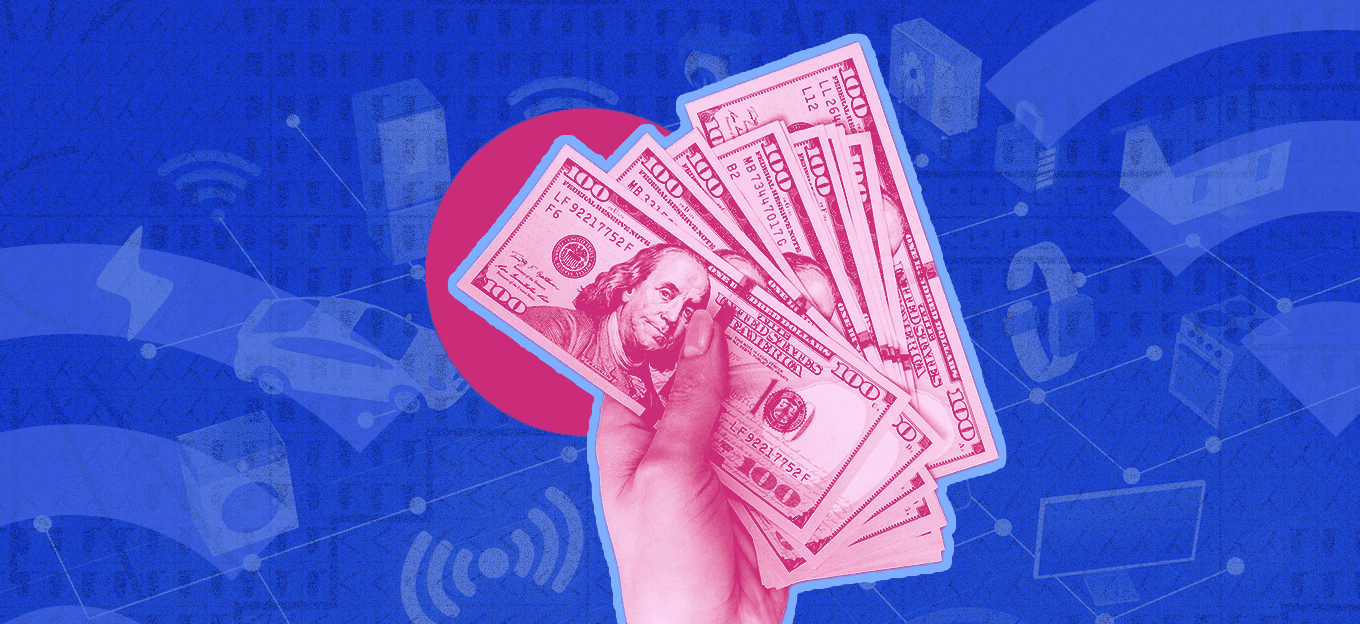Rethinking IoT Monetization: From Device Sales to Passive Income Models
Rethinking IoT Monetization: From Device Sales to Passive Income Models
- Last Updated: August 1, 2025
Honeygain SDK
- Last Updated: August 1, 2025



The Internet of Things (IoT) has exploded over the past decade, with an estimated 19.8 billion connected devices in use worldwide as of 2025. From smart homes to industrial automation, billions of devices are now online and interconnected. But while IoT innovation continues at a rapid pace, monetization models haven’t always kept up. Historically dominated by hardware sales and SaaS offerings, IoT revenue strategies are due for a rethink, especially as developers and product teams look to future-proof their products with sustainable, user-friendly income streams.
In this article, we’ll explore how IoT monetization has evolved and why non-intrusive SDK-based models are emerging as an exciting path forward. We'll also examine how technologies like Internet sharing SDK enables IoT app developers to unlock passive income without compromising user experience or product integrity.
The Traditional IoT Monetization Playbook
For years, monetization in IoT was relatively straightforward:
- Device sales: The most obvious path. Build a smart product, sell it, and generate revenue upfront. While simple, this approach often offers limited long-term value unless the hardware is paired with recurring services.
- SaaS subscriptions: To move beyond single-sale economics, many IoT companies introduced subscription services. Think security monitoring, usage analytics, or cloud access. SaaS offers consistent cash flow, but requires constant engagement and value delivery to justify ongoing costs.
- Data monetization: Aggregated device data can be sold or used internally for market intelligence. However, privacy concerns and compliance hurdles (especially under GDPR and similar laws) have made this path more complex.
Each of these models has its strengths, but they also come with challenges, whether it's high customer acquisition costs, limited scalability, or friction with end users who may be reluctant to commit to ongoing fees.
The Rise of Passive Monetization Models
As IoT matures, a new layer of monetization is gaining attention: passive, SDK-based income generation. These models allow developers to integrate small, efficient monetization layers into their existing products, without disrupting functionality or introducing ads, paywalls, or friction for users.
This approach is especially appealing for:
- Freemium apps and services seeking to support free-tier users.
- Emerging market deployments where users are less likely to pay directly.
- Startups needing alternative revenue streams to support growth without compromising UX.
Monetizing Internet Bandwidth - An Overlooked Resource
One underutilized asset in the IoT space is unused internet bandwidth. Most connected devices, especially consumer-facing IoT apps and always-online tools, maintain steady internet connections. Yet much of their bandwidth capacity goes unused.
But what if that excess bandwidth could generate revenue?
At the core of internet sharing models is a software development kit (SDK) that app developers integrate into their products. This SDK enables the app to share network resources securely when the device is idle or in low-usage states. Use cases might include:
- Data routing for load testing
- Content delivery verification
- Regional SEO and localization testing
Bandwidth is only used under specific conditions, often when the device is on Wi-F and users retain full control over participation. The model prioritizes privacy, security, and transparency, incorporating encryption, opt-in options, and user-facing controls as standard practices.
Why SDK-Based Monetization Works for IoT
This monetization model stands out for several reasons:
- Non-intrusive: There’s no disruption to core functionality, visual layout, or user flow.
- Zero additional hardware: All monetization happens via software.
- Immediate scalability: Once integrated, every user session becomes a monetizable asset.
- Opt-in by design: Users retain control through consent.
- Flexible integration: Works across Android, desktop, or embedded environments with minimal footprint.
The result? Developers can monetize utility and uptime, not just active engagement, opening new revenue channels without degrading user trust or performance.
This passive model works particularly well for:
- Utilities, dashboards, and remote monitoring apps that remain active in the background.
- Free or freemium services looking for revenue alternatives to ads or paywalls.
- Apps targeting price-sensitive regions, where paid upgrades or subscriptions see low uptake.
As mentioned before, these integrations are designed to be non-intrusive. Users don’t need to watch ads, click through popups, or change how they interact with the product. Monetization happens seamlessly, without compromising performance or experience.
Final Thoughts: Rethinking Value in IoT
As the IoT ecosystem continues to expand, so must our approach to monetization. Passive, SDK-driven income is not about replacing existing models, but bringing them to the next level. It's about turning idle potential and enabling more inclusive, sustainable IoT business models.
For developers and product leaders, the takeaway is simple: you don’t need to choose between user experience and monetization. With tools like Internet sharing SDK, you can design IoT products that both delight users and quietly drive revenue in the background.
The Most Comprehensive IoT Newsletter for Enterprises
Showcasing the highest-quality content, resources, news, and insights from the world of the Internet of Things. Subscribe to remain informed and up-to-date.
New Podcast Episode

What is Hybrid Connectivity for IoT?
Related Articles


